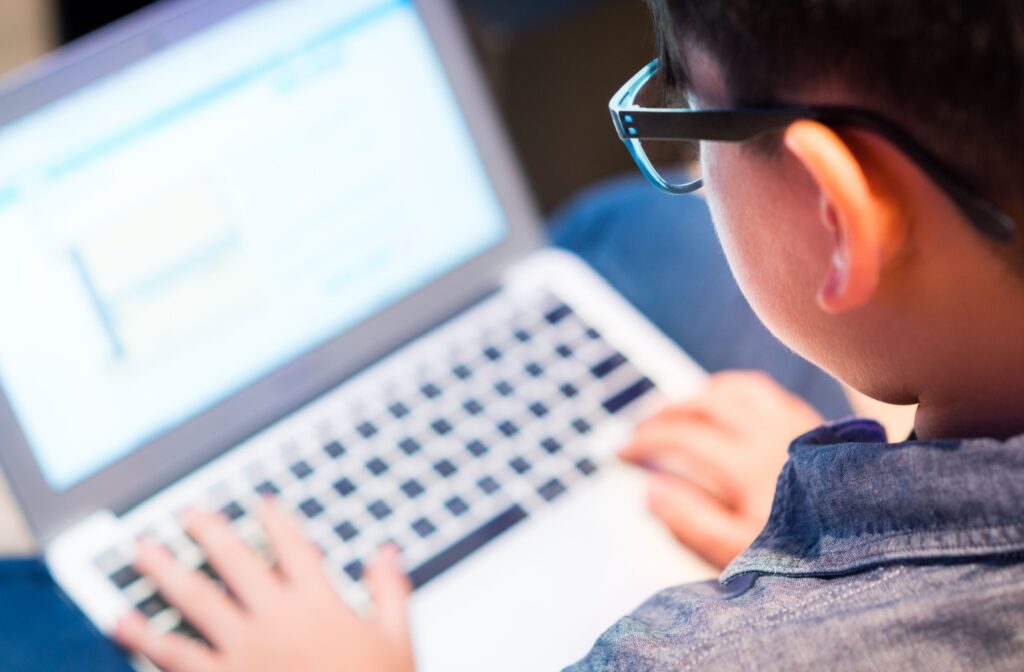LED lighting has become increasingly popular in homes, workplaces, and on screens. These energy-efficient light bulbs reduce electricity usage and have a long lifespan, but some people worry about potential risks to their eyes. With LED lights surrounding us more than ever, it’s important to understand their effects on eye health.
For the average person, LEDs are unlikely to cause permanent eye damage when used in moderation. However, some studies suggest that prolonged exposure to blue light from LED screens and bulbs may contribute to eye strain, headaches, and even potential retinal damage. Research is ongoing, and not all eye experts agree on the severity of these risks.
What Are LED Lights?
LED stands for light-emitting diode. Unlike traditional incandescent bulbs that heat a filament or compact fluorescent lights that use gas-filled tubes, LEDs emit light when an electric current passes through a semiconductor. This technology allows LEDs to be more energy-efficient and longer-lasting than older light sources.
Can LED Lights & Blue Light Damage Your Eyes?
LED lights, especially those labeled “cool white” or “daylight,” emit blue light. Blue light is a short-wavelength, high-energy light that is naturally present in sunlight and also emitted by artificial sources like LED screens, smartphones, and LED bulbs.
Blue light can have both positive and negative effects:
- The good: Blue light helps regulate your circadian rhythm, keeping you alert during the day and promoting restful sleep at night.
- The bad: Excessive exposure to blue light, particularly from screens, may lead to digital eye strain and potentially contribute to retinal cell damage.
Studies on Eye Damage & LED Lights
Research into the potential effects of LED lights on eye health is ongoing. Some studies highlight possible concerns, while others suggest the risks are minimal under normal conditions.
Phototoxicity Risk
High-intensity blue light has been linked to potential damage to retinal cells. A 2019 study by the French Agency for Food, Environmental and Occupational Health & Safety (ANSES) indicated that prolonged and repeated exposure to high-intensity LED light could increase the risk of retinal toxicity. However, this risk is primarily associated with extreme or occupational exposure, not everyday household lighting.
Digital Eye Strain
Extended use of screens that emit blue light, such as computers and smartphones, can lead to digital eye strain. Symptoms may include:
- Dry eyes
- Blurred vision
- Headaches
- Eye discomfort
These symptoms are generally temporary but can impact daily comfort and productivity.
Sleep Disruption
Blue light can suppress melatonin production, a hormone that regulates sleep. Exposure to screens and bright LED lighting in the evening can interfere with your sleep cycle, making it harder to fall asleep and stay asleep.

Protect Your Eyes from Potential LED Light Risks
If you’re concerned about LED lights affecting your eyes, there are simple steps you can take to reduce potential strain and discomfort:
- Choose warm-toned LED lights: Warm white LED bulbs emit less blue light than cool white or daylight bulbs. They create a softer, more relaxing light that is easier on the eyes, especially in the evening.
- Take breaks from screens: Follow the 20-20-20 rule: Every 20 minutes, look at something 20 feet away for at least 20 seconds. This helps reduce eye strain and gives your eyes a break from blue light exposure.
- Use blue light filters: Many devices now offer built-in blue light filters, sometimes called “night mode” or “blue light reduction.” Screen protectors with blue light filtering features are also available to reduce exposure.
- Consider blue light glasses: Blue light-blocking glasses can reduce glare and filter some blue light from screens. While they may not prevent all digital eye strain, some people find them helpful for reducing eye fatigue and improving sleep quality after screen use.
- Maintain proper lighting: Avoid using screens in a dark room, as the contrast between the bright screen and dim surroundings can increase eye strain. Ensure you have ambient lighting to reduce glare and balance brightness.
Are LED Lights Safe in General?
Yes, LED lights are generally safe and offer many benefits, such as energy efficiency and reduced environmental impact. The concerns around blue light are mainly associated with excessive screen use or intense exposure, not standard home lighting. Everyday use of LED lights is unlikely to harm your eyes, but practicing good screen habits can minimize discomfort.
If you frequently experience eye strain, dryness, or vision discomfort, it’s a good idea to visit an eye care professional. An optometrist can evaluate your eye health, discuss your screen habits, and recommend personalized solutions, such as blue light glasses or eye drops.
Take The First Step Toward Better Eye Health
Protecting your eyes from digital strain and blue light exposure is an important part of maintaining overall eye health. Simple adjustments to your lighting, screen use, and daily habits can make a significant difference in your comfort and long-term vision health.
At Total Vision Tierrasanta, we offer comprehensive eye exams and solutions for digital eye strain tailored to your needs. Whether you’re concerned about LED lights, screen time, or other vision issues, our team is here to support you.
Schedule your eye exam with Total Vision Tierrasanta today and take the first step toward protecting your eyes.


